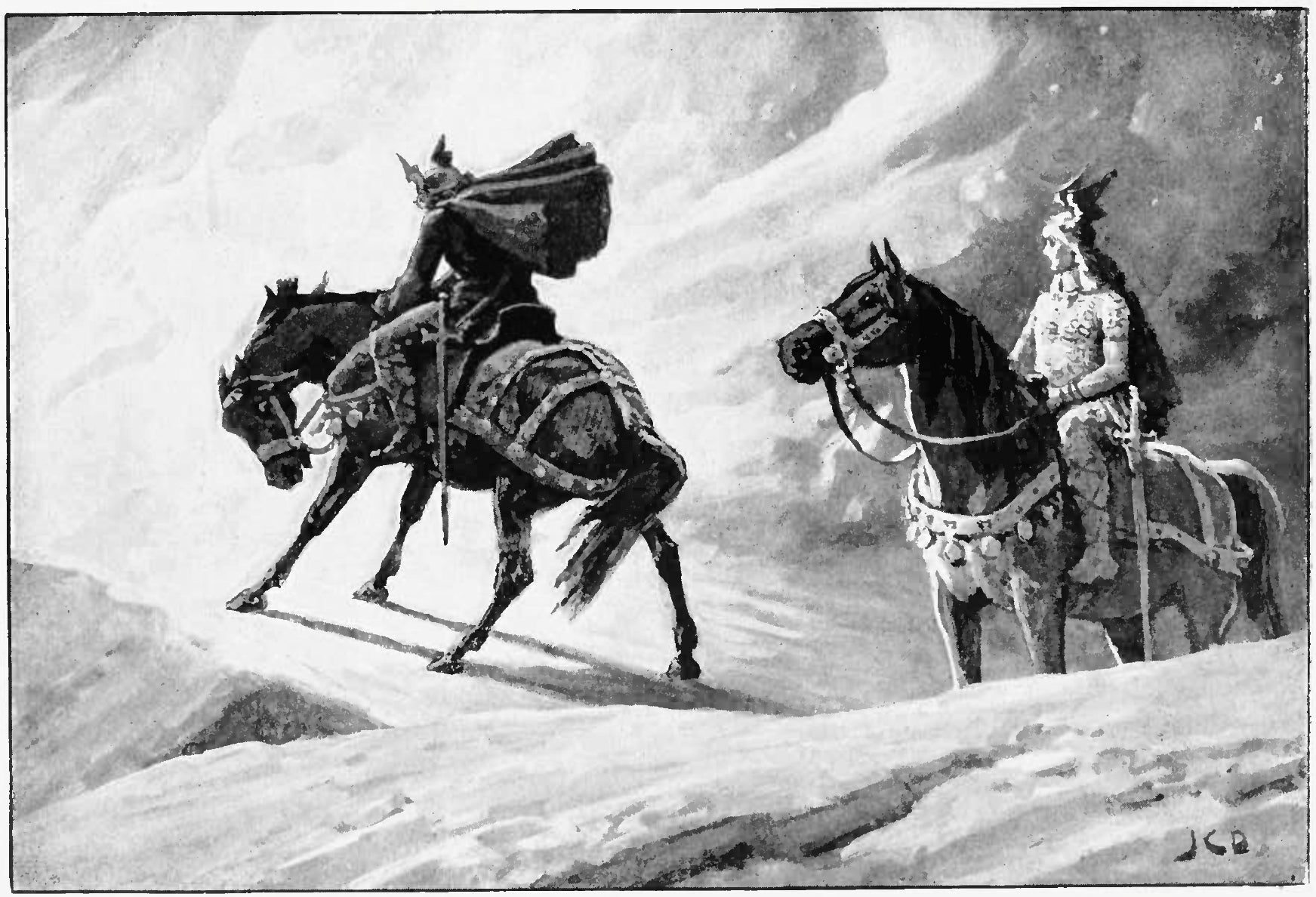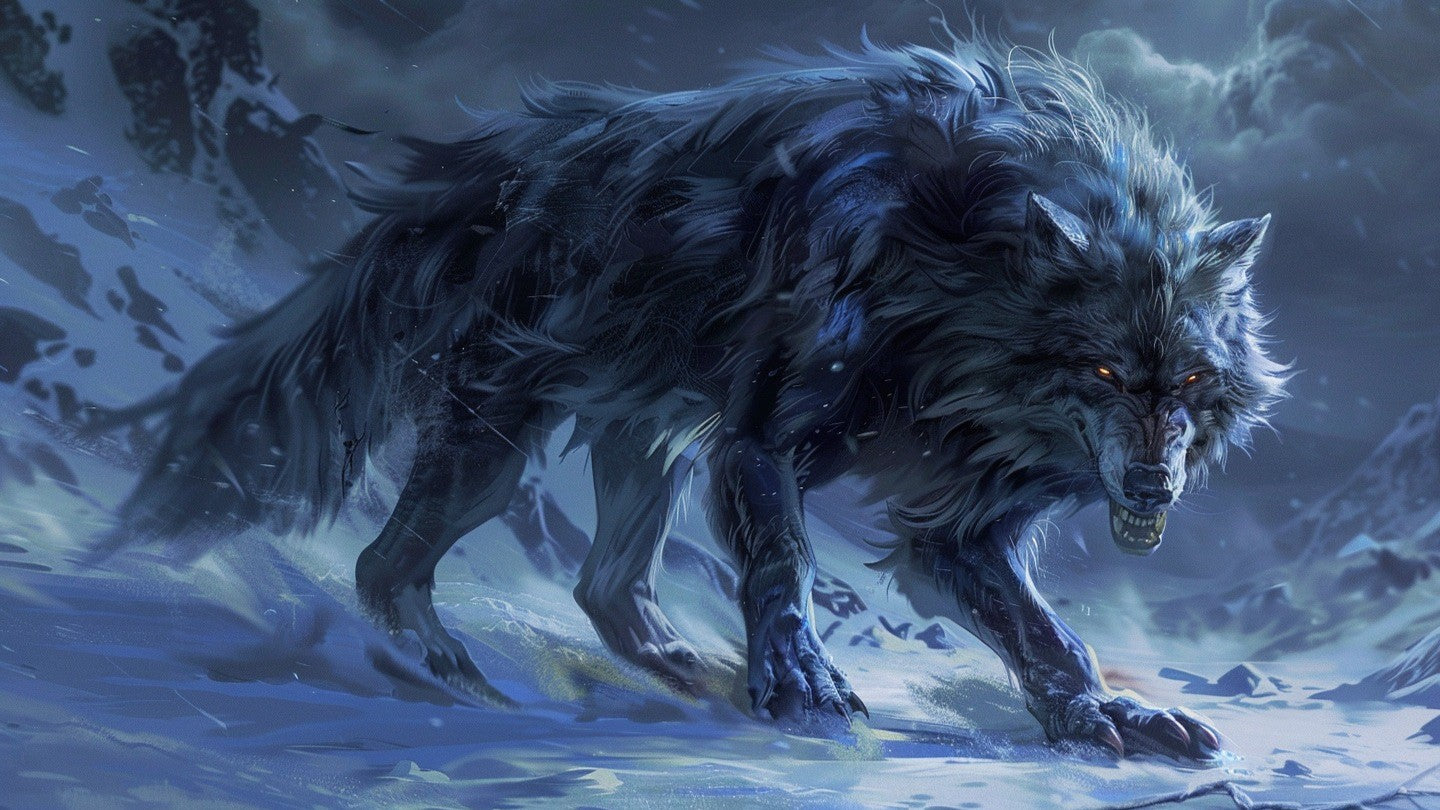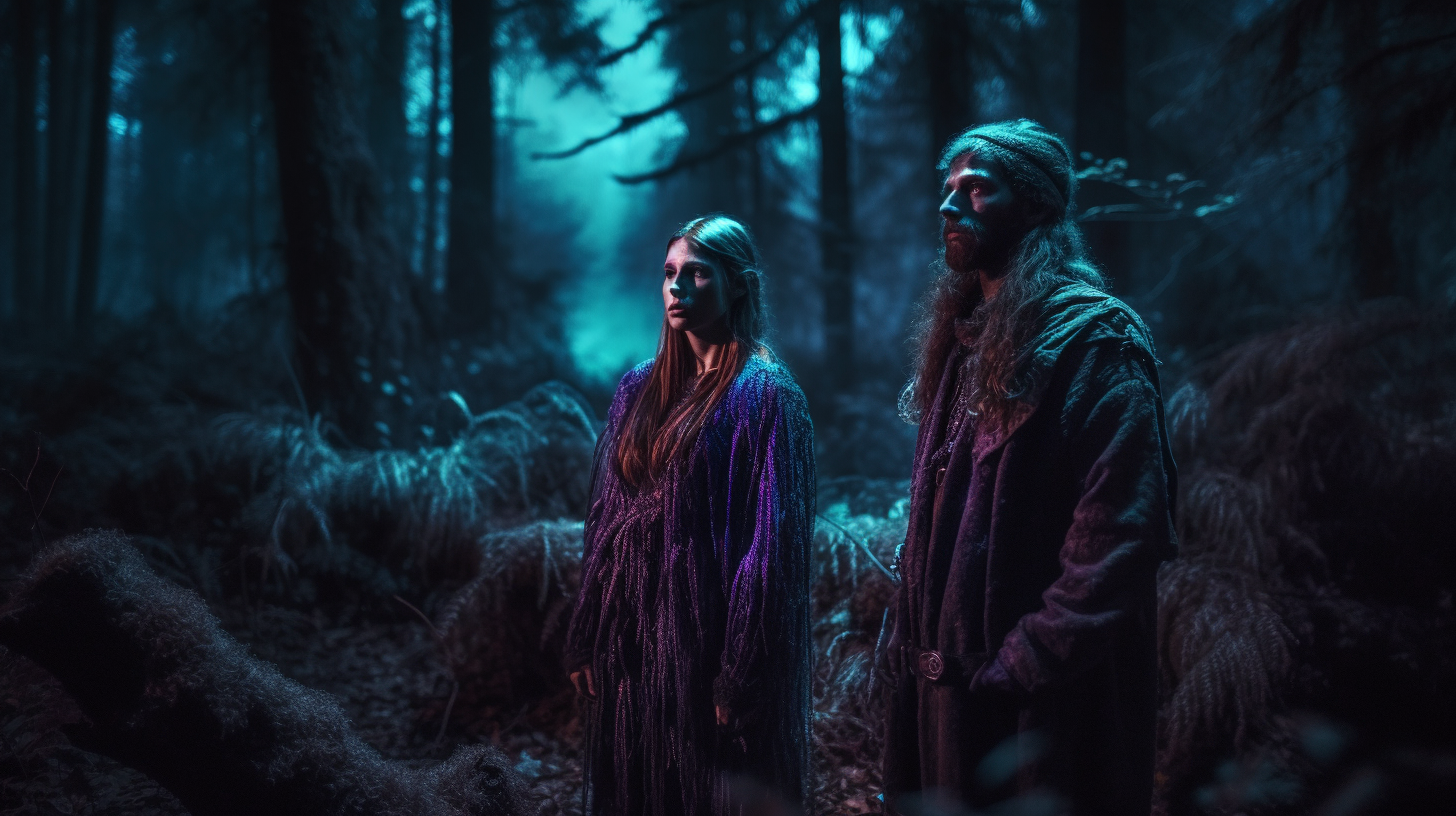
The Nibelungenlied: Unlocking the Epic Tale of Love, Revenge, and Honour
Welcome to the enthralling world of the Nibelungenlied! This epic poem isn't just a relic from the past; it's a timeless saga that plunges readers into a whirlwind of passion, betrayal, and heroism. But what exactly is this captivating tale all about?
The Nibelungenlied is a medieval German epic poem, believed to have been written around the 12th or 13th century. It's a cornerstone of Middle High German literature, revered for its intricate narrative and profound themes. As one of the greatest works of its time, it holds a special place in the annals of literary history.
Characters

Siegfried and Kriemhild (Public Domain)
In the heart of the Nibelungenlied lies a rich tapestry of characters, each contributing their own distinct essence to the epic narrative. At the forefront is Siegfried, renowned for his fearless exploits as a dragon-slayer, admired by many for his courage yet harbouring complexities beneath his valiant facade, including ambitions and a longing for love. Opposite him stands Kriemhild, a figure of unwavering love and relentless determination, driven by the tragic loss of her beloved to embark on a quest for vengeance, showcasing both vulnerability and resilience. Hovering ominously in the shadows is Hagen, the cunning antagonist whose machinations steer the story towards its tragic climax, his actions propelled by a thirst for power and dominance, leaving a trail of devastation in his wake. Together, these characters form the beating heart of the Nibelungenlied, their interactions and conflicts weaving a tale that delves deep into the complexities of human emotion and morality, inviting readers to ponder the intricacies of fate and the human condition.
Plot

"Siegfried's Death" by Julius Schnorr von Carolsfeld, 1847 (Public Domain)
In the Nibelungenlied, the plot unfolds amidst a medieval backdrop filled with chivalry, honor, and intrigue. At its core, the poem follows the exploits of Siegfried, a valiant hero known for slaying dragons, and Kriemhild, a noble maiden of Burgundy. Their initial encounter sparks a romance that sets the stage for the epic saga. As Siegfried embarks on a journey to win Kriemhild's hand, he braves perilous challenges and showcases his knightly prowess. However, his presence at the Burgundian court triggers a chain of events fueled by jealousy and ambition, leading to betrayal and tragedy. Rival factions clash in full-scale warfare, and amidst the chaos of battle, the true extent of Siegfried's betrayal is revealed. The survivors are left to grapple with the aftermath of their choices, navigating a world forever changed by their actions. Through lavish courtly ceremonies and bloody battles, the Nibelungenlied paints a vivid portrait of medieval life and values, offering readers a captivating tale of heroism and tragedy.
Themes

"Siegfried's Departure" by Julius Schnorr von Carolsfeld, c. 1843 (Public Domain)
Love, revenge, honor, and betrayal intertwine to form the core themes of this epic poem, enriching its narrative with depth and complexity. These themes serve as a lens through which the poem examines the intricacies of human relationships and the moral dilemmas faced by its characters. Love, depicted in various forms such as romantic love, familial love, and love of power, underscores the motivations and actions of the protagonists and antagonists alike, highlighting its transformative power. Revenge, fueled by deep-seated resentment and desire for justice, drives the characters to pursue vengeance at any cost, blurring the lines between righteousness and retribution. Honor, revered as a sacred virtue, becomes both a guiding principle and a source of conflict as characters navigate the complex web of social expectations and personal integrity [3]. And betrayal, a recurrent motif, serves as a catalyst for tragedy, exposing the fragility of trust and the consequences of deceit. Through the interplay of these themes, the Nibelungenlied offers profound insights into the human condition, prompting readers to reflect on timeless questions about the nature of love, loyalty, and justice.
Cultural Impact

Conversation with Smaug Illustration by JRR Tolkien
The cultural impact of the Nibelungenlied extends far beyond its medieval origins, shaping the depiction of dragons and heroic quests in literature and popular culture. In the Old Norse version, Sigurd, known as Siegfried in the Germanic tradition, slays the dragon Fafnir and his treacherous foster-father Regin. This narrative has inspired numerous adaptations and retellings, influencing iconic works such as J.R.R. Tolkien's "The Hobbit."
The concept of a hero confronting an evil dragon sitting upon treasures, as seen in Sigurd's confrontation with Fafnir, resonates deeply in fantasy storytelling. Tolkien's portrayal of Smaug, the dragon guarding the Lonely Mountain's hoard, draws heavily from this tradition, reflecting the archetype of the dragon as a symbol of greed and malevolence. Smaug's portrayal as a cunning and powerful antagonist mirrors Fafnir's role in Norse mythology, highlighting the enduring impact of Sigurd's legendary quest on modern fantasy literature.
Furthermore, the Nibelungenlied's themes of love, betrayal, and honor continue to captivate audiences worldwide, reinforcing its status as a timeless classic. Whether experienced through Wagner's operas or contemporary adaptations in literature and film, the Nibelungenlied's legacy endures as a testament to the enduring power of storytelling to transcend time and culture.
Interpretations

Fresco of the heroes Dietrich von Bern, Siegfried, and Dietleib. (Public Domain)
The Nibelungenlied, like all timeless masterpieces, beckons a plethora of interpretations, inviting scholars and enthusiasts alike to delve into its depths. Over centuries, scholars have meticulously dissected its symbolism, scrutinized its characters, and engaged in heated debates over its underlying meanings. From Freudian psychoanalysis unraveling the subconscious motivations of its protagonists to feminist critiques examining gender dynamics and power structures, the poem's rich tapestry of themes provides fertile ground for diverse interpretations. Some view it through the lens of historical allegory, seeing echoes of real-life events and figures from the 5th and 6th centuries intertwined with mythic elements. Others delve into its themes of idealized and deviant womanhood, civilization versus barbarism, honor versus vengeance, and the complex interplay between fate and action. Each interpretation offers a unique perspective, shedding light on different facets of the poem's enduring relevance and complexity. Ultimately, the Nibelungenlied stands as a testament to the power of literature to provoke thought, inspire dialogue, and captivate audiences across generations.
Literary Analysis
Within the verses of the Nibelungenlied lies a rich tapestry of literary brilliance awaiting exploration. Each stanza serves as a canvas painted with intricate literary devices and techniques, inviting readers to embark on a journey of discovery.

First page from the Nibelungenlied Manuscript, c. 1230. (Public Domain)
Allegory and Symbolism
One of the most captivating aspects of the Nibelungenlied is its use of allegory and symbolism. Throughout the poem, allegorical motifs and symbolic imagery abound, each imbued with deeper meanings and universal truths. For instance, the dragon that Siegfried slays symbolizes primal forces, while the hoard of treasure represents the allure of power [3]. These symbols enrich the narrative, adding layers of complexity and inviting readers to ponder their significance.
Exploration of Medieval Chivalric Ideals
Furthermore, the Nibelungenlied delves into the ethos of medieval chivalry, exploring concepts such as honor, loyalty, and courtly love. Through the actions of its characters, the poem offers insights into the ideals and values of the medieval era. The heroic deeds of Siegfried and the intricate web of relationships among the knights serve as reflections of the chivalric code, providing readers with a window into the medieval mindset.
In essence, the Nibelungenlied is not merely a story but a profound work of literature, brimming with allegorical depth and cultural insight. Its exploration of medieval chivalric ideals and its use of symbolism make it a timeless masterpiece, captivating readers and scholars alike with its richness and complexity.
Adaptations

Der Ring des Nibelungen opera in 1876. (Public Domain)
The Nibelungenlied's timeless narrative has transcended its medieval origins, inspiring a plethora of adaptations across various artistic mediums. From the grandeur of epic operas to the captivating allure of Hollywood blockbusters, this ancient tale has undergone countless transformations to suit the tastes of diverse audiences.
One of the most illustrious adaptations is Richard Wagner's operatic masterpiece, "Der Ring des Nibelungen." Wagner's magnum opus immortalized the themes and characters of the Nibelungenlied on the grand stage, infusing the story with his distinctive musical compositions that continue to enthrall audiences worldwide.
In the realm of literature, modern authors have reimagined the Nibelungenlied, offering fresh perspectives on its characters and plot. These literary retellings range from faithful recreations to inventive reinterpretations, exploring the epic's timeless themes through contemporary storytelling techniques.
Moreover, the silver screen has embraced the Nibelungenlied with adaptations ranging from epic historical dramas to animated features. These cinematic interpretations often blend elements of fantasy and adventure, captivating audiences with visually stunning depictions of the epic's iconic scenes.
Beyond literature and film, visual artists have also captured the essence of the Nibelungenlied through stunning artwork and illustrations. These visual adaptations offer unique insights into the epic's characters and settings, enriching the audience's understanding of its rich narrative.
Legacy

"Sigurd proofs the sword Gram" (1901) by Johannes Gehrts. (Public Domain)
The Nibelungenlied's influence spans across time and culture, leaving an indelible mark on literature and storytelling. Its timeless themes of love, betrayal, honor, and revenge resonate with audiences worldwide, reflecting fundamental aspects of the human experience.
Over the centuries, the Nibelungenlied has inspired countless adaptations, from literature to music, theater to film. Richard Wagner's operatic cycle "Der Ring des Nibelungen" stands as one of the most notable examples, showcasing the enduring appeal and adaptability of the poem's narrative.
Moreover, the Nibelungenlied serves as a cultural touchstone, offering insight into the values and beliefs of pre-Christian Germanic society. Its exploration of chivalric ideals and complex human emotions continues to captivate scholars and readers alike, fostering ongoing discussions about morality, power, and the nature of humanity.
Whether experienced as a literary masterpiece or a thrilling adventure tale, the Nibelungenlied stands as a testament to the enduring power of storytelling. Its ability to transcend time and culture reaffirms its status as a cornerstone of world literature, reminding us of the universality of human emotions and the timeless allure of a well-told tale.
Conclusion
In the realm of German literature, the Nibelungenlied stands as an immortal monument to the power of storytelling. With its captivating characters and timeless themes, it continues to resonate with audiences across generations, inviting them to explore the depths of human emotion and morality. As we bid farewell to this epic saga, let us carry with us the echoes of its enduring legacy, reminding us of the timeless allure of a well-told tale and the universality of the human experience.
FAQs
- What is the Nibelungenlied?
- The Nibelungenlied is a medieval German epic poem that tells the story of love, revenge, and honor.
- Who are the main characters in the Nibelungenlied?
- The main characters include Siegfried, Kriemhild, Hagen, Gunther, and Brunhild, among others.
- What is the significance of the Nibelungenlied?
- The Nibelungenlied is considered one of the greatest works of Middle High German literature and has had a profound influence on literature and popular culture.
- How long is the Nibelungenlied?
- The Nibelungenlied consists of around 2,400 stanzas, making it a substantial epic poem.
- Are there any modern adaptations of the Nibelungenlied?
- Yes, the Nibelungenlied has inspired numerous adaptations in literature, opera, film, and other media, showcasing its enduring appeal.








